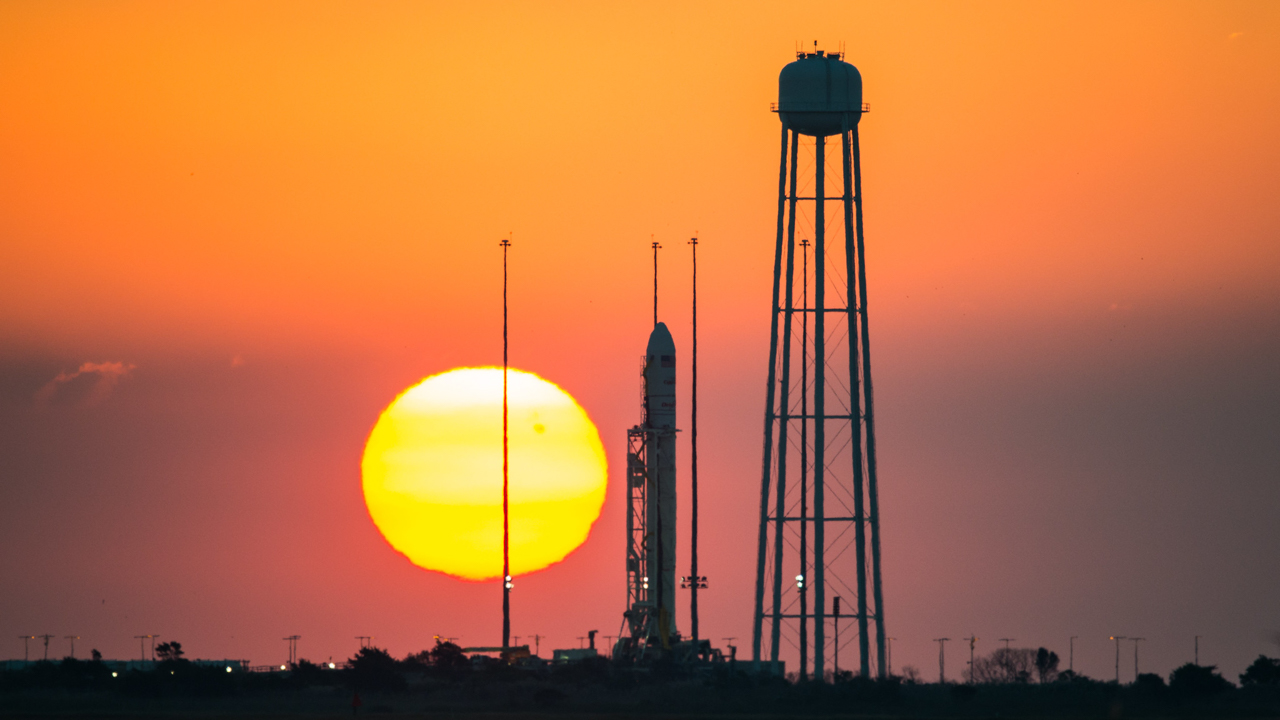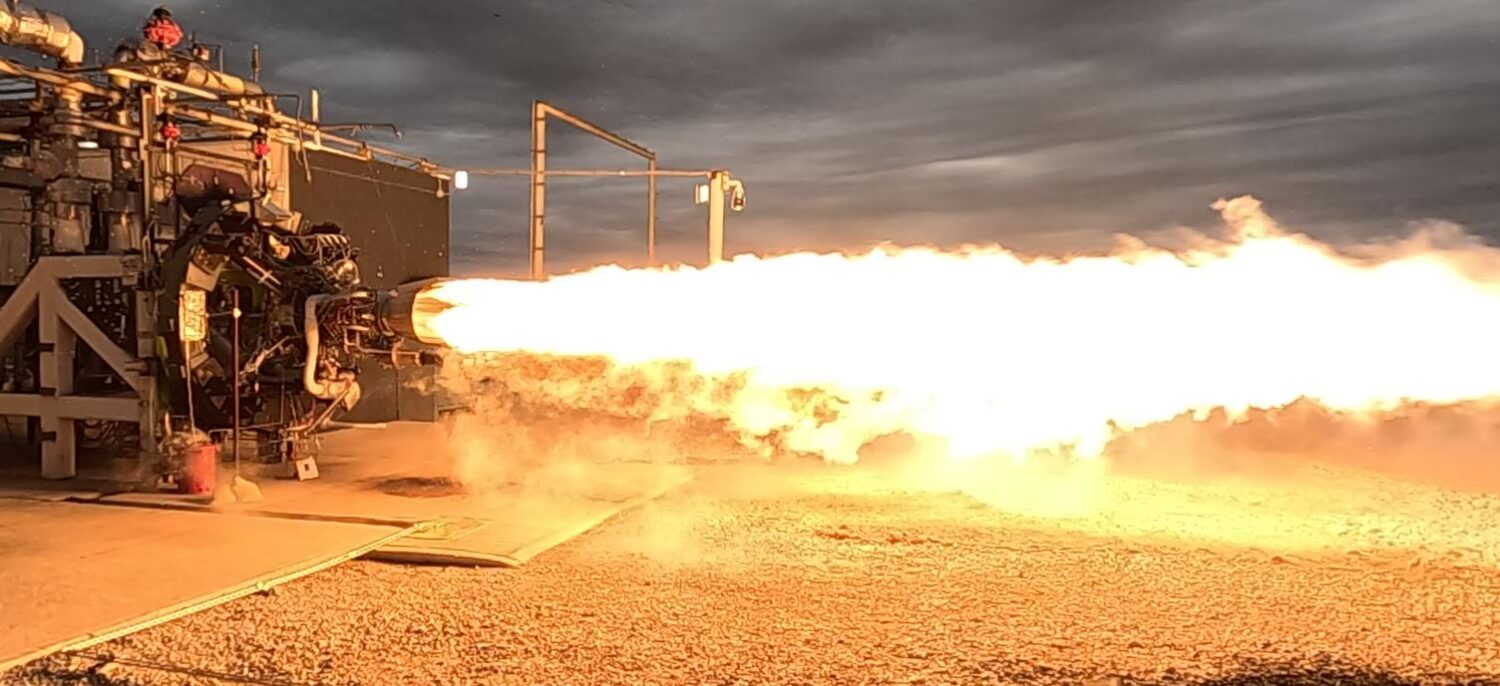

News
Northrup Grumman’s Antares set for its swan song launch
Later this evening at 8:31 p.m. ET (00:31 UTC on the 2nd), the Northrup Grumman Antares 230+ rocket is scheduled to launch its final resupply mission to the International Space Station.
The rocket will lift off from Launch Pad 0 at the Mid Atlantic Regional Spaceport on Wallops Island in Virginia, carrying the Cygnus cargo vehicle. Cygnus will be loaded with 8,200 lbs (3,719 kg) of supplies and experiments for the orbiting outpost.
The Ukrainian-built Antares launch vehicle has only been used to launch resupply missions to the ISS since its debut launch in April 2013, then owned by Orbital Sciences. Since its debut, it has had one failure and, as a result, underwent its first upgrade.
The first version of the rocket used NK-33 engines built by the Soviet Union in the 1970s, the engines were then bought by Aerojet-Rocketdyne and modified for use on the Antares rocket. The engines were renamed the AJ-26.
Antares explodes shortly after lift-off on 5th flight (Credit: NASA)
On the rocket’s 5th mission, one of those engines failed in spectacular fashion when a liquid oxygen turbopump with manufacturing defects failed 6 seconds after liftoff, causing Antares to fall back down onto the launch pad and explode.
This set off a chain of events for U.S. launch providers as the United States banned further purchasing of Russian-made engines in December 2014, a decision that was altered just a year later to accommodate United Launch Alliance, whose Atlas V rocket uses Russian-made RD-180 engines.
Following the failure, Antares was switched over to using the RD-181 engines and thus creating the next Antares variant, the 230 series of the rocket. This version would go on to launch 12 more times before the Russian invasion of Ukraine, and the resulting sanctions against Russia forced Northrup Grumman to end its reliability on the Ukrainian-built first stage and Russian engines.
In August 2022, Northrup Grumman announced they had contracted Firefly Aerospace to produce a new medium-lift rocket for the company that will be called the Antares 330. The 330 series will use 7 Miranda engines from the company. The 330 series upper stage will be the Castor 30XL solid-fueled rocket motor, with later versions using a vacuum-optimized Miranda engine to provide extra performance.
Miranda rocket engine test (Credit Firefly Aerospace)
While the Antares 330 rocket is being designed and built, Northrup Grumman has contracted SpaceX to launch 3 Cygnus resupply missions in order to fulfill their contract with NASA.
Northrup Grumman has said they expect to be able to launch the Antares 330 by Summer 2025.
The current weather outlook shows an 80% chance of acceptable conditions at lift-off. NASA will host a live stream of the launch on its YouTube page.
Questions or comments? Shoot me an email at rangle@teslarati.com, or Tweet me @RDAnglePhoto.

News
Tesla starts showing how FSD will change lives in Europe
Local officials tested the system on narrow country roads and were impressed by FSD’s smooth, human-like driving, with some calling the service a game-changer for everyday life in areas that are far from urban centers.

Tesla has launched Europe’s first public shuttle service using Full Self-Driving (Supervised) in the rural Eifelkreis Bitburg-Prüm region of Germany, demonstrating how the technology can restore independence and mobility for people who struggle with limited transport options.
Local officials tested the system on narrow country roads and were impressed by FSD’s smooth, human-like driving, with some calling the service a game-changer for everyday life in areas that are far from urban centers.
Officials see real impact on rural residents
Arzfeld Mayor Johannes Kuhl and District Administrator Andreas Kruppert personally tested the Tesla shuttle service. This allowed them to see just how well FSD navigated winding lanes and rural roads confidently. Kruppert said, “Autonomous driving sounds like science fiction to many, but we simply see here that it works totally well in rural regions too.” Kuhl, for his part, also noted that FSD “feels like a very experienced driver.”
The pilot complements the area’s “Citizen Bus” program, which provides on-demand rides for elderly residents who can no longer drive themselves. Tesla Europe shared a video of a demonstration of the service, highlighting how FSD gives people their freedom back, even in places where public transport is not as prevalent.
What the Ministry for Economic Affairs and Transport says
Rhineland-Palatinate’s Minister Daniela Schmitt supported the project, praising the collaboration that made this “first of its kind in Europe” possible. As per the ministry, the rural rollout for the service shows FSD’s potential beyond major cities, and it delivers tangible benefits like grocery runs, doctor visits, and social connections for isolated residents.
“Reliable and flexible mobility is especially vital in rural areas. With the launch of a shuttle service using self-driving vehicles (FSD supervised) by Tesla in the Eifelkreis Bitburg-Prüm, an innovative pilot project is now getting underway that complements local community bus services. It is the first project of its kind in Europe.
“The result is a real gain for rural mobility: greater accessibility, more flexibility and tangible benefits for everyday life. A strong signal for innovation, cooperation and future-oriented mobility beyond urban centers,” the ministry wrote in a LinkedIn post.
News
Tesla China quietly posts Robotaxi-related job listing
Tesla China is currently seeking a Low Voltage Electrical Engineer to work on circuit board design for the company’s autonomous vehicles.

Tesla has posted a new job listing in Shanghai explicitly tied to its Robotaxi program, fueling speculation that the company is preparing to launch its dedicated autonomous ride-hailing service in China.
As noted in the listing, Tesla China is currently seeking a Low Voltage Electrical Engineer to work on circuit board design for the company’s autonomous vehicles.
Robotaxi-specific role
The listing, which was shared on social media platform X by industry watcher @tslaming, suggested that Tesla China is looking to fill the role urgently. The job listing itself specifically mentions that the person hired for the role will be working on the Low Voltage Hardware team, which would design the circuit boards that would serve as the nervous system of the Robotaxi.
Key tasks for the role, as indicated in the job listing, include collaboration with PCB layout, firmware, mechanical, program management, and validation teams, among other responsibilities. The role is based in Shanghai.
China Robotaxi launch
China represents a massive potential market for robotaxis, with its dense urban centers and supportive policies in select cities. Tesla has limited permission to roll out FSD in the country, though despite this, its vehicles have been hailed as among the best in the market when it comes to autonomous features. So far, at least, it appears that China supports Tesla’s FSD and Robotaxi rollout.
This was hinted at in November, when Tesla brought the Cybercab to the 8th China International Import Expo (CIIE) in Shanghai, marking the first time that the autonomous two-seater was brought to the Asia-Pacific region. The vehicle, despite not having a release date in China, received a significant amount of interest among the event’s attendees.
Elon Musk
Elon Musk and Tesla AI Director share insights after empty driver seat Robotaxi rides
The executives’ unoccupied tests hint at the rapid progress of Tesla’s unsupervised Robotaxi efforts.

Tesla CEO Elon Musk and AI Director Ashok Elluswamy celebrated Christmas Eve by sharing personal experiences with Robotaxi vehicles that had no safety monitor or occupant in the driver’s seat. Musk described the system’s “perfect driving” around Austin, while Elluswamy posted video from the back seat, calling it “an amazing experience.”
The executives’ unoccupied tests hint at the rapid progress of Tesla’s unsupervised Robotaxi efforts.
Elon and Ashok’s firsthand Robotaxi insights
Prior to Musk and the Tesla AI Director’s posts, sightings of unmanned Teslas navigating public roads were widely shared on social media. One such vehicle was spotted in Austin, Texas, which Elon Musk acknowleged by stating that “Testing is underway with no occupants in the car.”
Based on his Christmas Eve post, Musk seemed to have tested an unmanned Tesla himself. “A Tesla with no safety monitor in the car and me sitting in the passenger seat took me all around Austin on Sunday with perfect driving,” Musk wrote in his post.
Elluswamy responded with a 2-minute video showing himself in the rear of an unmanned Tesla. The video featured the vehicle’s empty front seats, as well as its smooth handling through real-world traffic. He captioned his video with the words, “It’s an amazing experience!”
Towards Unsupervised operations
During an xAI Hackathon earlier this month, Elon Musk mentioned that Tesla owed be removing Safety Monitors from its Robotaxis in Austin in just three weeks. “Unsupervised is pretty much solved at this point. So there will be Tesla Robotaxis operating in Austin with no one in them. Not even anyone in the passenger seat in about three weeks,” he said. Musk echoed similar estimates at the 2025 Annual Shareholder Meeting and the Q3 2025 earnings call.
Considering the insights that were posted Musk and Elluswamy, it does appear that Tesla is working hard towards operating its Robotaxis with no safety monitors. This is quite impressive considering that the service was launched just earlier this year.








